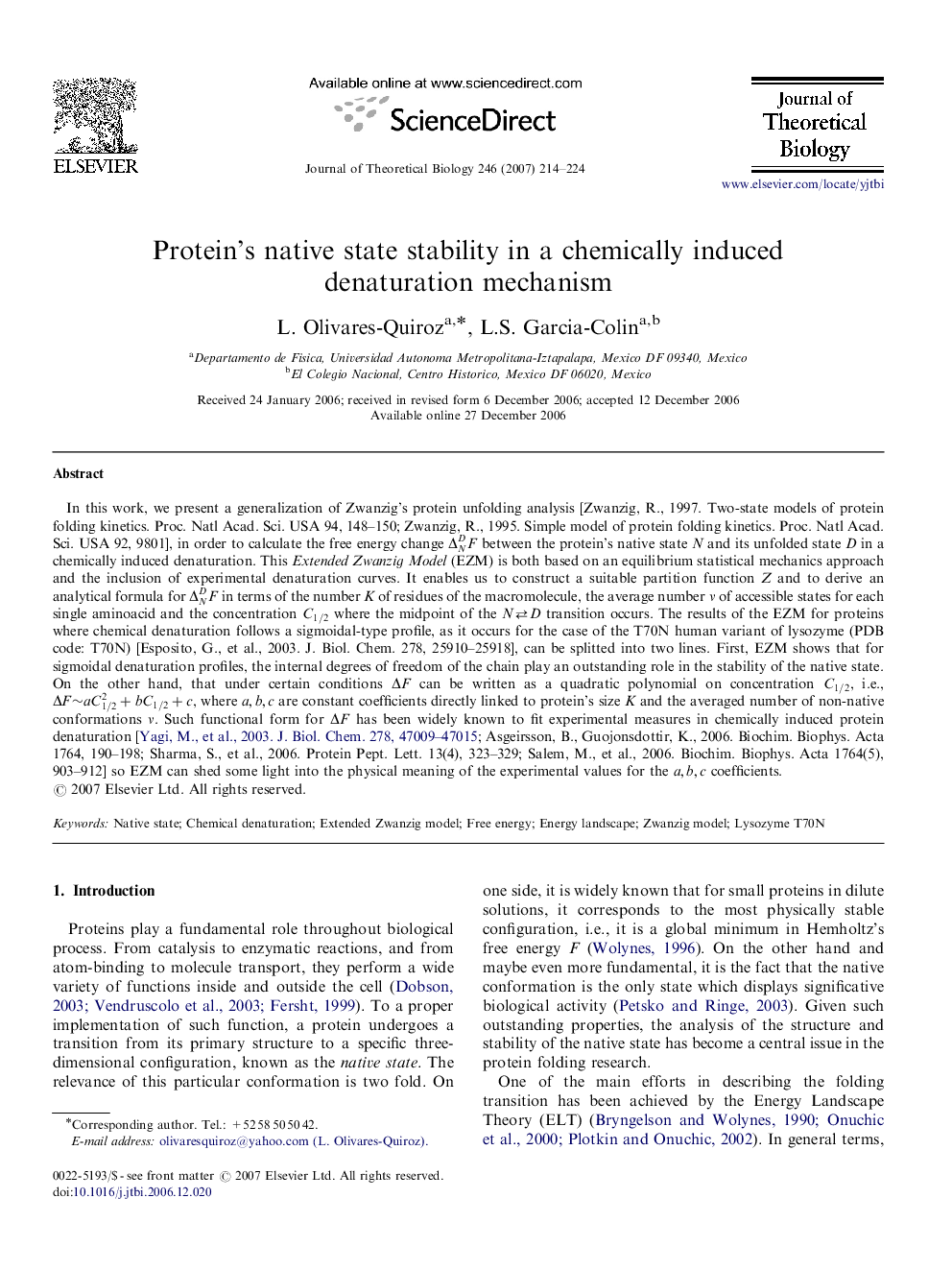| Article ID | Journal | Published Year | Pages | File Type |
|---|---|---|---|---|
| 4499164 | Journal of Theoretical Biology | 2007 | 11 Pages |
Abstract
In this work, we present a generalization of Zwanzig's protein unfolding analysis [Zwanzig, R., 1997. Two-state models of protein folding kinetics. Proc. Natl Acad. Sci. USA 94, 148-150; Zwanzig, R., 1995. Simple model of protein folding kinetics. Proc. Natl Acad. Sci. USA 92, 9801], in order to calculate the free energy change ÎNDF between the protein's native state N and its unfolded state D in a chemically induced denaturation. This Extended Zwanzig Model (EZM) is both based on an equilibrium statistical mechanics approach and the inclusion of experimental denaturation curves. It enables us to construct a suitable partition function Z and to derive an analytical formula for ÎNDF in terms of the number K of residues of the macromolecule, the average number ν of accessible states for each single aminoacid and the concentration C1/2 where the midpoint of the NâD transition occurs. The results of the EZM for proteins where chemical denaturation follows a sigmoidal-type profile, as it occurs for the case of the T70N human variant of lysozyme (PDB code: T70N) [Esposito, G., et al., 2003. J. Biol. Chem. 278, 25910-25918], can be splitted into two lines. First, EZM shows that for sigmoidal denaturation profiles, the internal degrees of freedom of the chain play an outstanding role in the stability of the native state. On the other hand, that under certain conditions ÎF can be written as a quadratic polynomial on concentration C1/2, i.e., ÎFâ¼aC1/22+bC1/2+c, where a,b,c are constant coefficients directly linked to protein's size K and the averaged number of non-native conformations ν. Such functional form for ÎF has been widely known to fit experimental measures in chemically induced protein denaturation [Yagi, M., et al., 2003. J. Biol. Chem. 278, 47009-47015; Asgeirsson, B., Guojonsdottir, K., 2006. Biochim. Biophys. Acta 1764, 190-198; Sharma, S., et al., 2006. Protein Pept. Lett. 13(4), 323-329; Salem, M., et al., 2006. Biochim. Biophys. Acta 1764(5), 903-912] so EZM can shed some light into the physical meaning of the experimental values for the a,b,c coefficients.
Related Topics
Life Sciences
Agricultural and Biological Sciences
Agricultural and Biological Sciences (General)
Authors
L. Olivares-Quiroz, L.S. Garcia-Colin,
